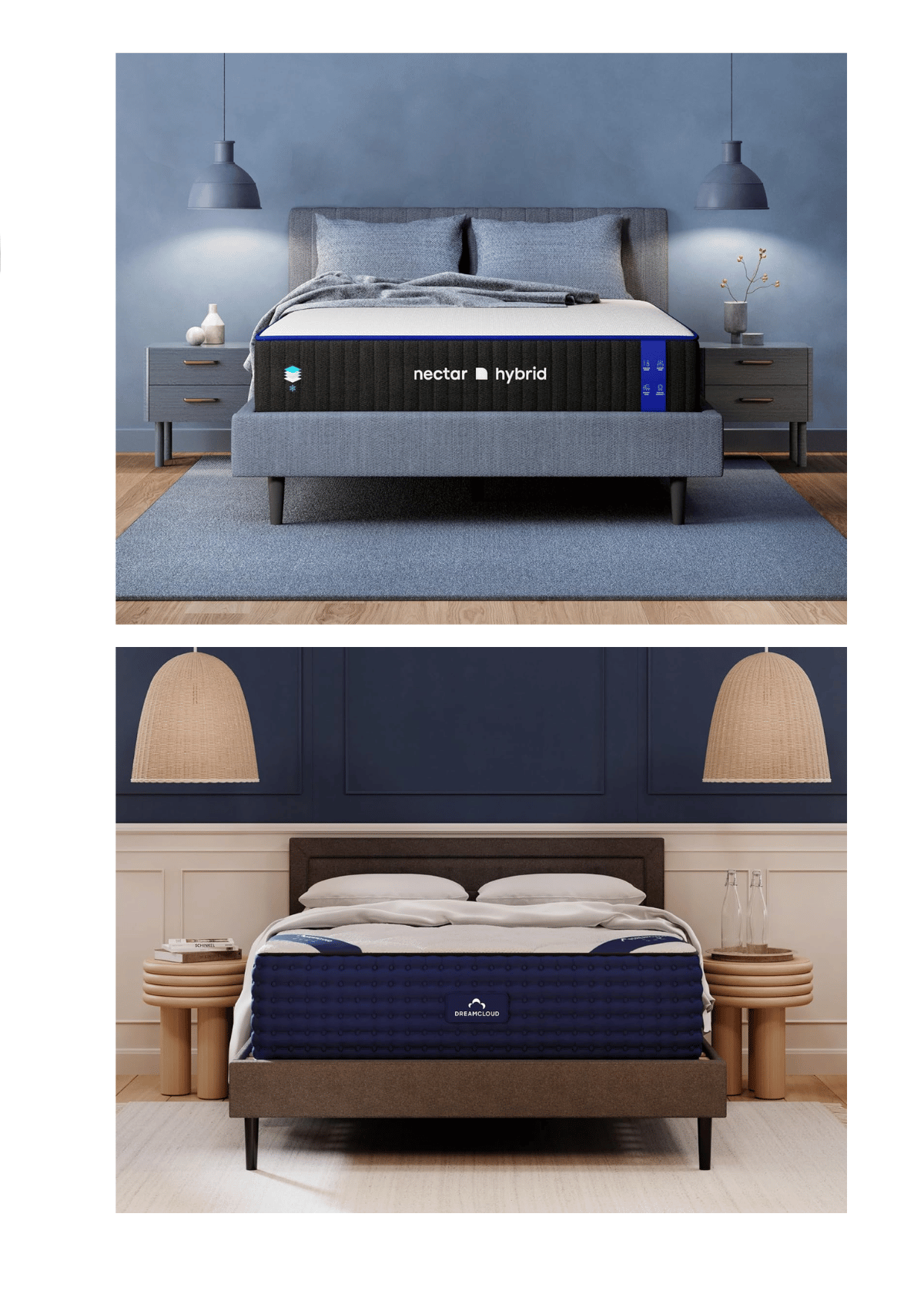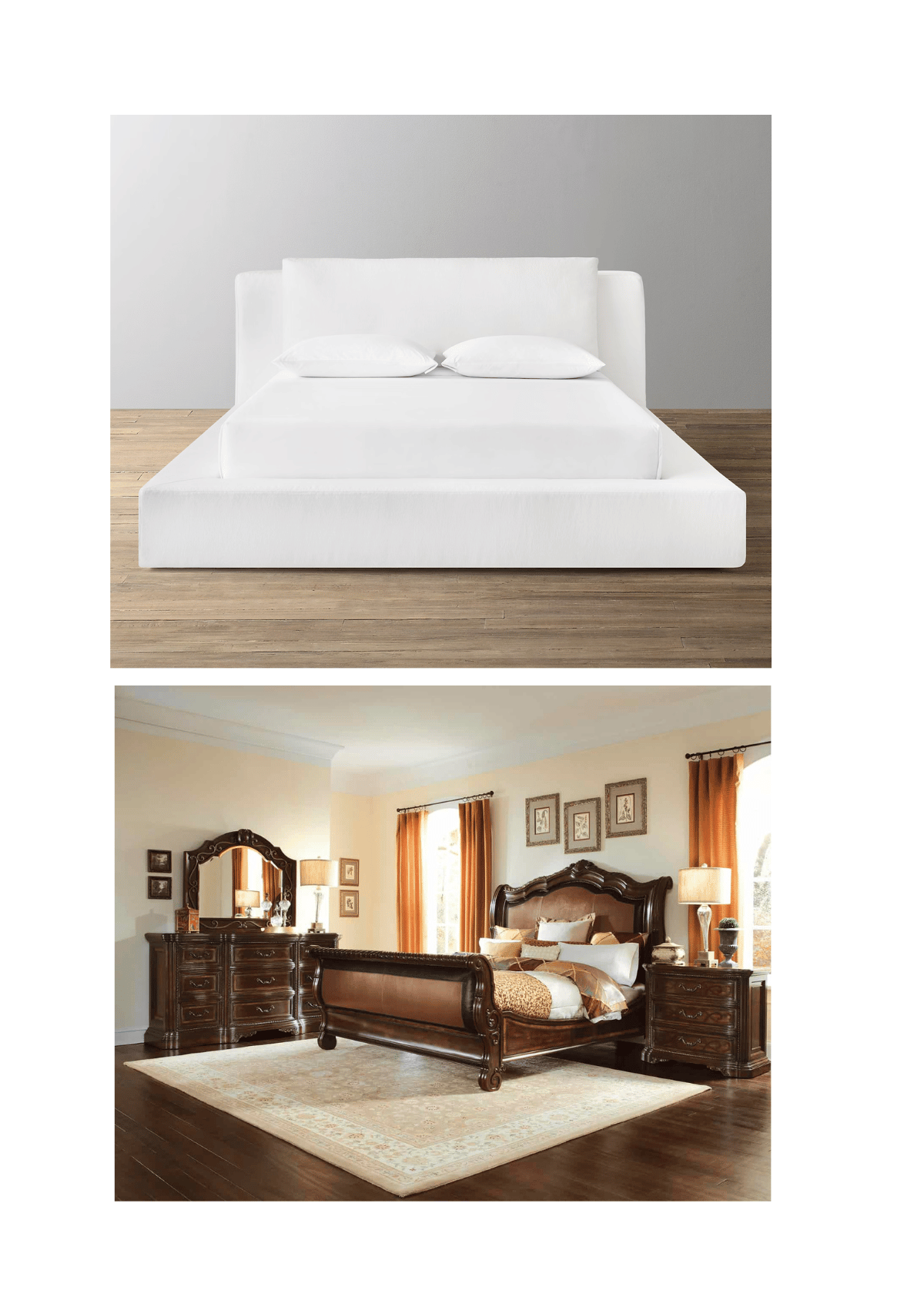(Last Update: 12/04/2024)
Are you struggling to find the perfect mattress firmness for a restful night's sleep?
I understand how crucial it is to achieve the right balance of comfort and support.
In this guide, I will explore how your sleeping position, body weight, and personal preference influence your ideal mattress firmness.
By understanding these factors, you can make an informed decision that enhances your sleep quality.
Let's embark on this journey together to find the optimal comfort level for your best night's sleep.
Short Summary:
- Your sleep quality can vary based on how firm a mattress is.
- Understanding mattress firmness involves personal preferences, body weight, and sleeping position.
- The ideal mattress firmness is determined by testing different mattresses while considering factors such as sleeping position, body weight, and comfort preferences.
- It is important to understand trial periods and return policies when purchasing a mattress for optimal comfort, support & firmness.
Understanding Mattress Firmness
Mattress firmness is a subjective experience that can vary significantly between individuals. What feels like a cloud to one person might feel like a rock to another.
This subjectivity is due to factors such as body mass and sleeping positions and position, which we will discuss later in this blog post.
The mattress industry uses a firmness scale, usually 1 to 10, to provide a standardized way of comparing mattress firmness: 1 is the softest, and 10 is the firmest.
However, firmness and support are not synonymous; understanding the difference is essential when choosing a mattress.

Firmness Scale Explained
Understanding Mattress Firmness Levels
The firmness scale is used to compare the firmness of different mattresses. A rating of represents the softest possible mattress, while 10 denotes the very firmest mattress. Most mattresses fall within the range of 3 to 8, with the industry standard for a medium mattress firmness being 6.5 out of 10.
Choosing the Right Firmness for Your Sleep Needs
Understanding the firmness scale helps you identify which level of firmness suits you based on your sleeping position and body mass.
For instance, I suggest soft mattresses for lightweight individuals and side sleepers, as they provide the necessary pressure relief.
In contrast, medium-firm to firm mattresses are generally better for back or stomach sleepers or those with chronic back pain.
However, the firmness scale is just a guideline, and personal preference plays a significant role. I endorse testing different mattresses to determine your perfect firmness.
Additionally, consider how mattress materials, such as memory foam or innerspring, influence the feel, even with the same firmness rating.
Ultimately, your sleeping position, body weight, and personal comfort preference determine the ideal mattress firmness.

Firmness vs. Support
Although often used interchangeably, firmness and support refer to distinct characteristics of a mattress.
Firmness describes the initial sensation you experience when lying on a mattress, while support refers to how well the mattress maintains your spine in alignment.
Understanding this distinction is crucial when choosing a new mattress. A softer bed can provide adequate support for certain sleepers, depending on factors like body distribution and sleeping position.
Therefore, firmness and support must be considered when evaluating mattresses. This will help you make an informed decision and enjoy a relaxing night's sleep.
Factors Affecting Mattress Firmness Choice
Now that we've established the difference between mattress firmness and support let's dive deeper into the factors that affect your choice of mattress firmness.
Three primary factors come into play when selecting the ideal firmness: personal preference, sleeping position, and body mass.
These factors can significantly influence your perception of a mattress's firmness and whether a particular mattress provides the right balance of comfort and support for your needs.

Sleep Position
- Your sleeping position is pivotal in determining the ideal mattress firmness for you.
- In general, side sleepers tend to favor softer mattresses, providing adequate cushioning for their shoulders and hips, allowing for proper spinal alignment, back pain, and pressure relief.
- It is suggested that side sleepers opt for hotel mattresses for firmness of up to 7 on the firmness scale.
On the other hand, stomach and back sleepers typically prefer firmer mattresses. These mattresses offer better support for their spine and help prevent them from sinking too deeply into the mattress, which can lead to discomfort and misalignment.
Stomach sleepers may benefit from a firmness level of 8-10, while back and stomach sleepers usually find medium—to extra-firm beds and mattresses more comfortable.
It's important to note that these recommendations are general guidelines, and personal preferences may vary.
For instance, some back sleepers might prefer a slightly softer mattress for added pressure relief, while others might desire a firmer mattress surface for extra support.
The key is to find the right balance between comfort and support based on your unique needs and preferences.

Body Weight
How firm a mattress feels can greatly affect your sleep quality. In addition to your sleeping position, your body mass can significantly impact your perception of a mattress's softness or firmness and the level of support it provides.
- Lightweight individuals (under 130 pounds) often prefer softer mattresses, which can provide adequate cushioning and pressure relief without feeling too soft or firm.
- On the other hand, heavier individuals (230 pounds or more) generally require a firmer mattress to prevent sinking too deeply into the mattress and maintain proper spinal alignment.
- A firm mattress top at least 10 inches thick is recommended for individuals of a heavier build.
- Those with an average weight (130-230 pounds) usually have a broader preference range regarding mattress firmness.
Depending on their sleeping position and personal preference, they can often have a medium to extra-soft mattress or find comfort and support in mattresses with medium to firm levels.
Ultimately, the best way to determine the ideal firmness for your body distribution is to test different mattresses and consider how they feel in terms of comfort and support.
Personal Preference: From the softer mattress to the Firmer Mattress
Lastly, personal preference is crucial in determining your ideal mattress firmness.
While guidelines based on sleeping position and body mass can be helpful, I suggest listening to your body and choosing a comfortable and supportive mattress for your unique needs.
Some individuals prefer a plush, medium-soft mattress that cradles their body, while others find a firmer, more supportive mattress to be the most comfortable.
Considering all the factors mentioned above and trying out different mattresses, you can find the perfect firmness that ensures a restful and rejuvenating night's sleep.
Mattress Firmness Levels and Their Benefits
Now that we've discussed the factors affecting your choice of mattress firmness let's examine the different firmnesses and their benefits.
Understanding the characteristics and advantages of soft, medium, and firm mattresses can help you make a more informed decision about selecting the ideal mattress for your needs.

Soft Mattresses
- Soft mattresses, classified as 1 to 2 on the mattress scale, provide the highest amount of cushioning available.
- In addition, memory foam mattresses often feature quilted pillow tops or substantial sections of soft memory foam in their uppermost layers, creating a luxurious and plush sleeping surface for enhanced comfort and relaxation.
- Soft mattresses can be especially beneficial for petite individuals and side sleepers, as they offer additional cushioning to alleviate pressure points in the hips and shoulders, back and stomach sleepers.
However, it's essential to ensure that a soft mattress provides adequate support to maintain proper spinal alignment and prevent discomfort between sleep positions.
Medium Mattresses
Medium mattresses are typically rated between 6 and 7 on the firmness scale. They balance support and comfort and are both moderately soft and moderately firm.
- These mattresses can provide various benefits, such as maintaining spinal alignment, reducing back and hip pain from before and hip pain afterward, and catering to various sleeping positions and body weights.
- A Medium firm feel in a mattress provides balanced support, potentially alleviating shoulder pain.
- Medium mattresses are ideal for combination and back sleepers, balancing support and comfort. Unlike softer mattresses that feel too plush, medium mattresses allow easier movement and prevent sinking while offering a cushioned surface. This makes them versatile, accommodating various sleep positions comfortably.
Because of their versatility, soft to medium-side mattresses are often considered a "universal comfort" option that can cater to most combination sleepers.
Firm Mattresses
Firm mattresses are characterized by their stiff composition and thin comfort layers, unlike latex mattresses, which have thick base and comfort layers below.
As a result, these mattresses provide a firmer sleep surface that can be particularly beneficial for heavier individuals and those who sleep on their backs or stomachs. They offer better support for the spine and help prevent sinking too deeply into the soft mattress below.
While extra-firm mattresses are less common than their softer counterparts, they can still provide a comfortable and supportive sleeping surface for those who prefer a more rigid feel.

Tips for Couples Choosing Mattress Firmness
Choosing a mattress that suits both partners can be challenging for couples with differing firmness preferences. However, some strategies can help you find the perfect mattress that provides comfort and support for both individuals.
This section will discuss tips for couples choosing the best mattress for firmness, such as compromising on firmness level and opting for split king mattresses with different firmness measurements.

Compromising on Firmness
Shoulder pain sufferers often find relief with a Medium firm feel mattress, which cradles the joint without excessive pressure.
One approach couples can take is to compromise on the support core firmness level of their mattress. Opting for a medium to medium-firm mattress can provide a satisfactory balance of support and comfort for couples with varying sleep habits.
Moreover, medium to medium-firm mattresses are more durable and long-lasting than softer mattresses, which can be an added advantage for couples sharing a bed. Finding a middle ground allows both partners to enjoy a restful and comfortable night's sleep.
Split King Mattresses
Another option for couples with different firmness preferences is to consider a split king mattress. A split king mattress is a king-sized bed composed of two twin XL mattresses placed side by side on a firm bed top foundation, allowing each partner to customize their side of the bed to their comfort level.
Split king mattresses offer individualized comfort and support without sacrificing the space of a traditional king-sized mattress. They can also be more cost-effective than purchasing two separate mattresses, making them attractive for couples seeking personalized comfort.

Adjusting Mattress Firmness
Whether you're looking to make your mattress firmer or softer, methods are available to adjust mattress firmness to suit your needs better. In this section, we will discuss mattress toppers and the concept of a break-in period to modify mattress firmness and achieve the perfect balance of comfort and support.
Mattress Toppers
Mattress toppers are a thin layer of cushioning that can be placed on top of your mattress to alter its firmness level. Mattress toppers are available in various materials, including memory foam, latex, wool, and down, each providing different levels of comfort and support.
Adding a mattress topper can enhance the cushioning and support of your mattress, help alleviate pressure points, and even extend the life of your existing mattress. When selecting a mattress topper, it's essential to consider factors such as the type of material, thickness, and firmness level and ensure the topper is compatible with your mattress.
Break-In Period
The break-in period refers to the time it takes for a mattress to mold to your body and for your body to acclimate to the new sleeping surface.
I recommend giving this period, which typically lasts 30 to 90 days, a chance, as it varies depending on the type of mattress.
It is essential to allow your body to adjust to the new mattress and settle into its intended comfort level during the break-in period.
If you are patient, you may find that your initially uncomfortable mattress eventually conforms to your body, providing the perfect balance of comfort and support.
I like this approach because it ensures you maximize your new mattress investment.
Trial Periods and Returns
Before committing to a new mattress, it's crucial to test it out and ensure it's the right fit for you in terms of comfort, support, and firmness. This section will discuss the importance of testing mattresses, whether online or in-store and the significance of understanding return policies when purchasing your mattress.

Testing Mattresses
When evaluating mattresses before purchase, it's essential to lie down on them and assess their comfort and support. Please look over the mattress for any signs of degradation, such as sagging or indentations, and consider how firm they feel.
Many companies offer trial periods if you plan to purchase a mattress online. These periods allow you to test the mattress for a specified number of nights, usually from 30 to 365. This trial period lets you assess whether the mattress meets your needs and preferences, ensuring you make an informed decision and avoid buyer's remorse.
Return Policies
Understanding the return policy of the store or mattress brands from which you're purchasing your mattress is crucial to the buying process. Return policies can vary, with some retailers offering risk-free trials and full refunds, while others may only allow exchanges or charge a return delivery fee.
By familiarizing yourself with the specific return policy of your chosen retailer, you can make sure you're making a confident and informed decision and avoid any potential complications or disappointments down the line.
Summary
Finding the right mattress firmness is essential for optimal comfort and a restful night's sleep.
I recommend considering your sleeping position, body weight, and personal preferences when making your choice.
By understanding these factors and experimenting with different options, you can discover the perfect balance of comfort and support.
I suggest considering the firmness that fits your needs— Listen to your body. We can ensure you achieve the best sleep possible, enhancing your overall well-being.
Frequently Asked Questions For the Best Mattress Firmness Guide
What are the three comfort levels that apply to mattresses?
Mattresses can be divided into three comfort levels: Plush, Medium Firmness, and Firm. A plush mattress is soft and provides plenty of cushioning, while medium-firm mattresses and firm beds offer a balance of comfort and support. Finally, Firm mattresses are the most often supportive mattresses and provide minimal cushioning for a firmer sleeping surface. Choosing the right mattress is highly subjective and depends on your preferences.
What firmness of mattress do most people prefer?
Most consumers prefer mattresses with medium firmness, between 4 and 7 out of 10 on the medium firmness feel on the scale. This range is often considered the ideal balance of comfort and support.
What does firm mean in mattress comfort level?
Firmness refers to how hard or soft a mattress feels when discussing mattress comfort level. On the 10-point scale, firmer mattresses are at higher levels, while softer beds are at the lower end. Everyone has different comfort preferences, so it is important to choose the right one for you.
What is the best price on an extra firm king-size mattress?
For an extra-firm king-size mattress, the Beautyrest Silver BRS900 12" Extra Firm King Mattress is available on Amazon for $879.99. Alternatively, the Serta Clarks Hill Elite Extra Firm 13" Innerspring Mattress is sold for $899.99.
What firmness rating is best for side sleepers?
The ideal mattress firmness for side sleepers is medium to medium-firm. This type of mattress offers the necessary balance of support and comfort for a comfortable night's rest. Lighter sleepers may prefer softer mattress options (4 on the firmness scale), while heavier sleepers should opt for a firmer option (up to 7).







